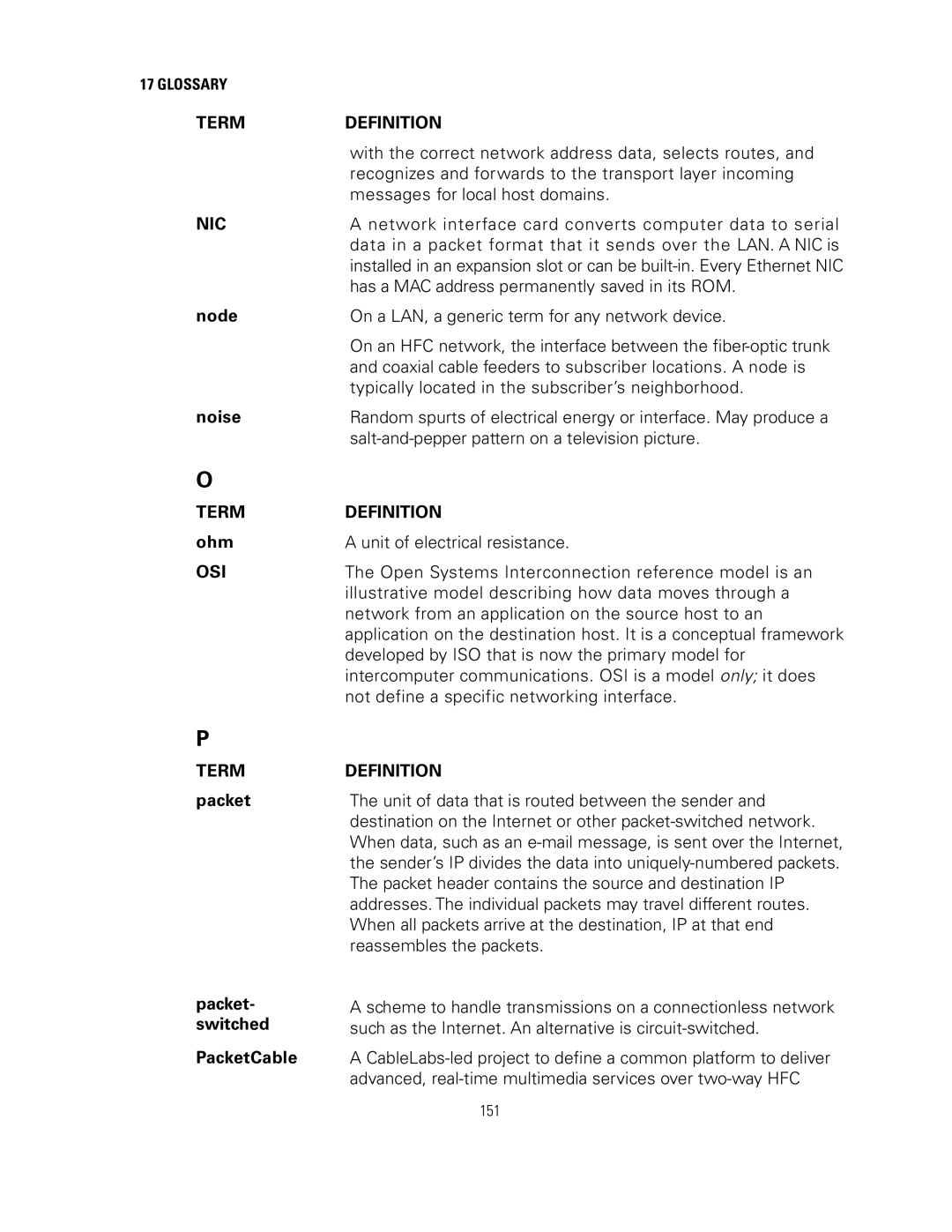17 GLOSSARY |
|
TERM | DEFINITION |
| with the correct network address data, selects routes, and |
| recognizes and forwards to the transport layer incoming |
| messages for local host domains. |
NIC | A network interface card converts computer data to serial |
| data in a packet format that it sends over the LAN. A NIC is |
| installed in an expansion slot or can be |
| has a MAC address permanently saved in its ROM. |
node | On a LAN, a generic term for any network device. |
| On an HFC network, the interface between the |
| and coaxial cable feeders to subscriber locations. A node is |
| typically located in the subscriber’s neighborhood. |
noise | Random spurts of electrical energy or interface. May produce a |
|
O
TERM | DEFINITION |
ohm | A unit of electrical resistance. |
OSI | The Open Systems Interconnection reference model is an |
| illustrative model describing how data moves through a |
| network from an application on the source host to an |
| application on the destination host. It is a conceptual framework |
| developed by ISO that is now the primary model for |
| intercomputer communications. OSI is a model only; it does |
| not define a specific networking interface. |
P
TERM | DEFINITION |
packet | The unit of data that is routed between the sender and |
| destination on the Internet or other |
| When data, such as an |
| the sender’s IP divides the data into |
| The packet header contains the source and destination IP |
| addresses. The individual packets may travel different routes. |
| When all packets arrive at the destination, IP at that end |
| reassembles the packets. |
packet- switched
PacketCable
A scheme to handle transmissions on a connectionless network such as the Internet. An alternative is
A
151
